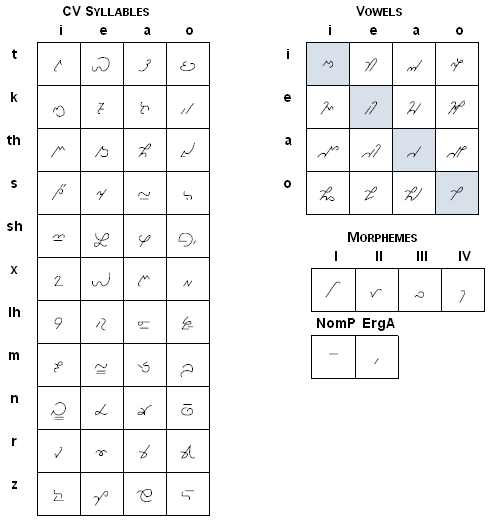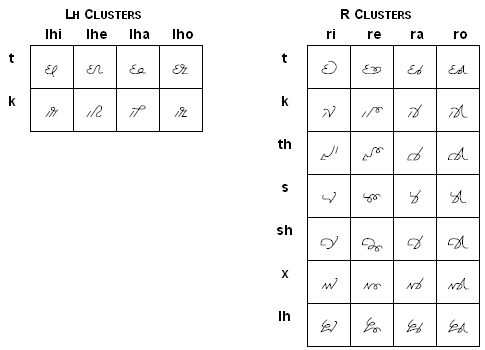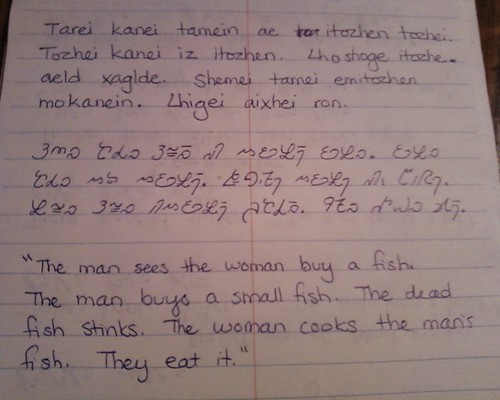Lhenazi is written with a syllabic script, which suits the language well because it mostly only allows consonant-vowel pairs in words anyway.
See the font page for the downloadable font I used to create the graphics below.
Charts
Basic Characters

Consonant Clusters

Usage
Every consonant-vowel pair is written with one character:
- ta
- re
- tare
to see
The last consonant of a word is voiced. However, neither transliteration nor syllabary characters show this voicing:
- shite
book(NOM)
- shiten
book(ACC,ABS)
The only time a consonant is allowed without a following vowel is at the end of a word. The character for a standalone consonant is the same as the <consonant>o, but with a small open circle added to the character:
- izo
- iz
small
Diphthongs are written like a word-final consonant plus the special diphthong character:
- tie
this
- not written as
- not written as
An exception to the diphthong rule is when they are paired with a consonant cluster. In that case, the cluster ligature is written with the first vowel of the diphthong, then the second vowel is written separately:
- threote
to play
Every noun belongs to one of four noun classes. A special noun class character is added to the end of every word. Because all noun classes except class IV end with a suffix unique to that noun class, the special class character stands for that sound, rather than the regular character for that sound.
- Noun Class I: kesath
day
- ends with -th,
but no word-final th is written:
- ends with -th,
but no word-final th is written:
- Noun Class II: sazi
water
- ends with -i,
but the last syllable's i is still
written:
- ends with -i,
but the last syllable's i is still
written:
- Noun Class III: zorei
friend
- ends with -ei
but is written as
<consonant>e:
- ends with -ei
but is written as
<consonant>e:
- Noun Class IV: itoshe
fish
- no common ending
Nominative/accusative and ergative/absolutive markers are added to the noun class characters:
- tarei zorei itoshen
the friend(NOM) sees a fish(ACC)
- not written as
- not written as
- tare zoreild itoshen
the friend(ERG) saw a fish(ABS)
- not written as
- not written as
Epenthetic vowels or consonants are not written:
- ainitoshe
fishes
- not written as
- not written as
- ziden
bee(ACC,ABS)
- not written as
- not written as
Development
Like many other writing systems, the Lhenazi script developed from a simple pictographic collection of symbols. Over time, symbols were simplified and came to stand for the sound of the word they represented, rather than the meaning of the word.
Examples
Here's a photo of my first writing in the Lhenazi script:
And here's the same text, typed with the Lhenazi font:

